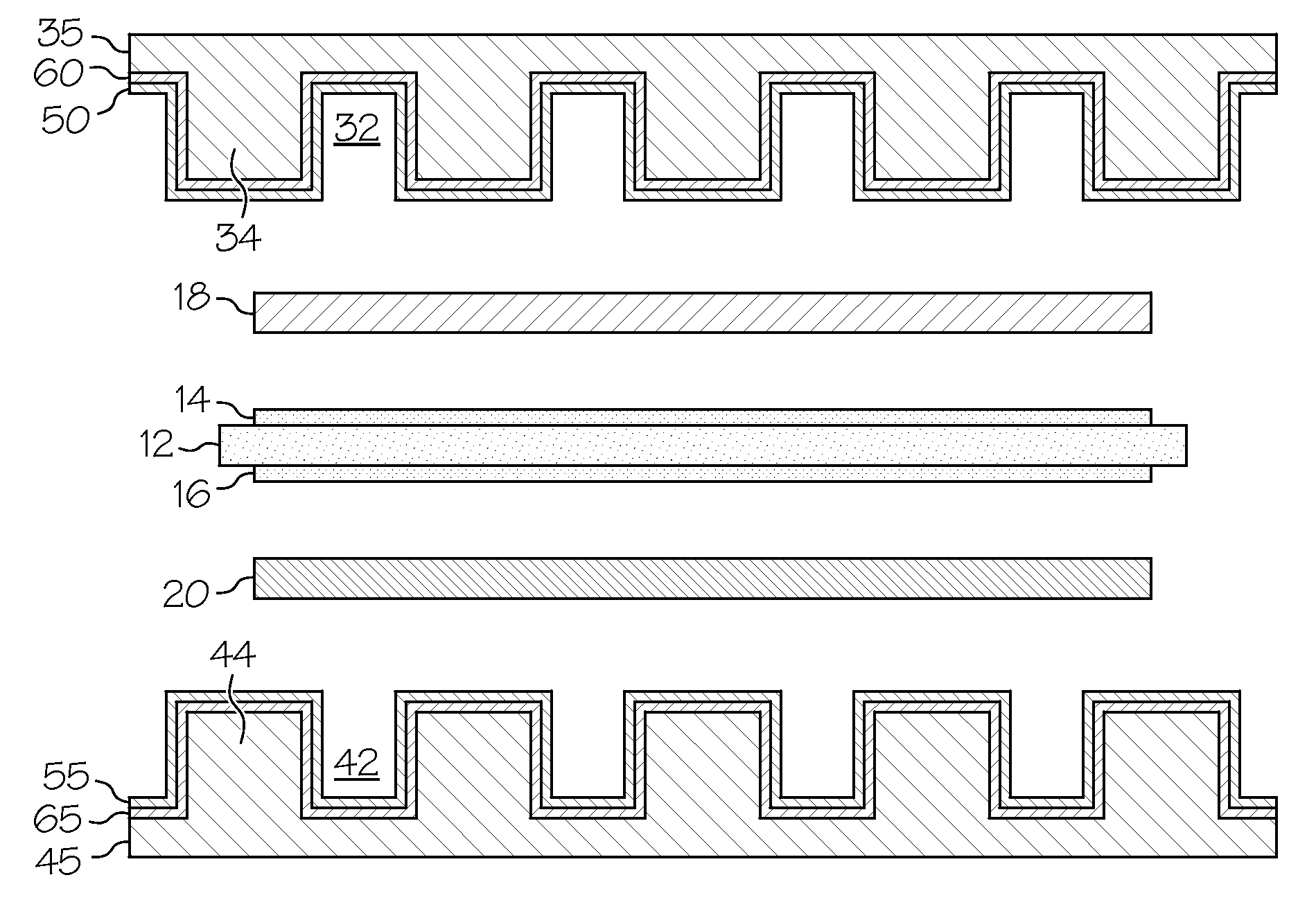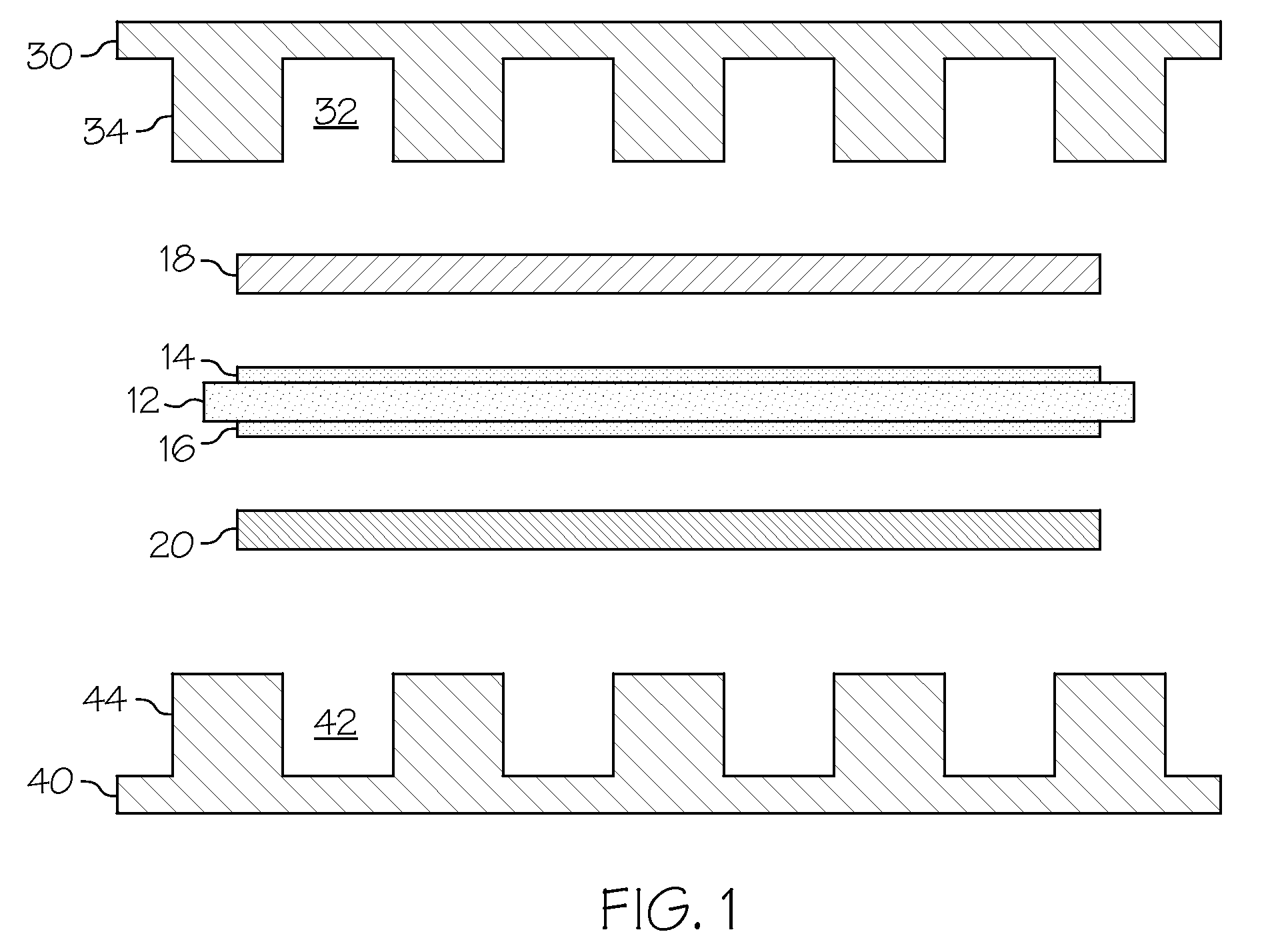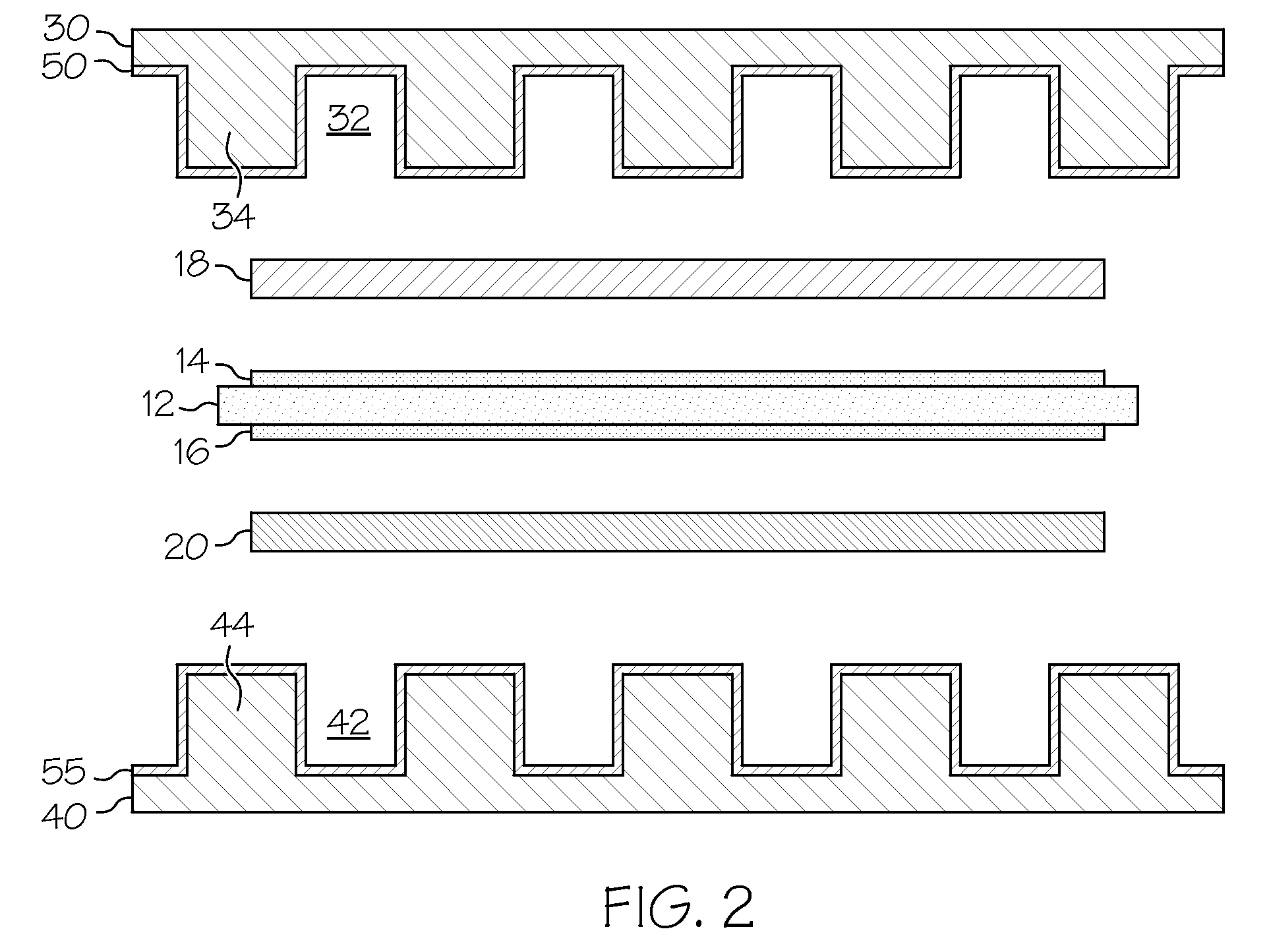Low-cost manganese-stabilized austenitic stainless steel alloys, bipolar plates comprising the alloys, and fuel cell systems comprising the bipolar plates
a technology of austenitic stainless steel and low-cost manganese, which is applied in the field of manganese-stabilized austenitic stainless steel, can solve the problems of high-nickel austenitic stainless steel cost increase, copper too is a relatively expensive metal, and the alloy is sensitive to corrosion, etc., and achieves stable austenitic structure, high corrosion resistance, and sound mechanical properties.
- Summary
- Abstract
- Description
- Claims
- Application Information
AI Technical Summary
Benefits of technology
Problems solved by technology
Method used
Image
Examples
examples
[0048]Sample ingots of manganese-stabilized austenitic stainless steels were made in a cast iron book mold of 50 kg steel capacity fed by an air-melt induction furnace pot. The melting points of the alloys initially were estimated based on composition, but superheats of 50-150° C. were added for pouring. Furnace charges consisted of pure iron and steel scrap, FeCr, and FeNi. Nitrogen was added as nitrided FeCr. Samples (pins) were taken from the melt for chemical analysis. If the pin samples contained porosity, aluminum was added to the melts to kill the steels. The compositions of the castings are shown in TABLE 1.
[0049]
TABLE 1Compositions of the manganese-stabilized austenitic stainless steels.MeltingComposition, wt. %SamplePoint (° C.)CCrNiMnSiAlNSPFeGM114700.04618190.60.0470.270.00500.013bal.GM214500.060181150.60.0600.350.00400.019bal.GM314300.058181210.6—0.380.00300.025bal.
[0050]The resulting ingots were cut to 8-10″-long billets in preparation for hot-rolling. The billets were...
PUM
| Property | Measurement | Unit |
|---|---|---|
| thickness | aaaaa | aaaaa |
| thickness | aaaaa | aaaaa |
| elongation | aaaaa | aaaaa |
Abstract
Description
Claims
Application Information
 Login to View More
Login to View More - R&D
- Intellectual Property
- Life Sciences
- Materials
- Tech Scout
- Unparalleled Data Quality
- Higher Quality Content
- 60% Fewer Hallucinations
Browse by: Latest US Patents, China's latest patents, Technical Efficacy Thesaurus, Application Domain, Technology Topic, Popular Technical Reports.
© 2025 PatSnap. All rights reserved.Legal|Privacy policy|Modern Slavery Act Transparency Statement|Sitemap|About US| Contact US: help@patsnap.com



